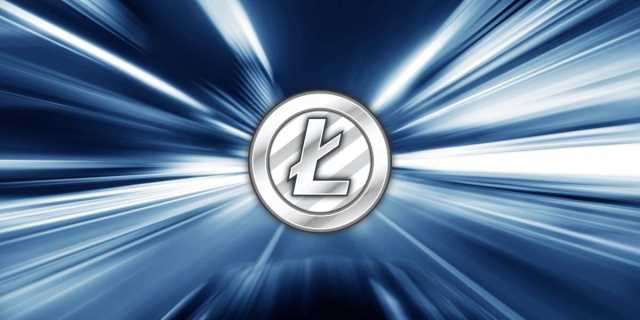
But some surveys and studies have suggested that crypto is still dominated by affluent white men. Even though there are scams and frauds within crypto, and crypto investors are certainly fond of trying to recruit other people to buy in, many investors will tell you that they are going in with their eyes wide open. But if they’re right — even partly — the best time to start paying attention is now, before the paths are set and the problems are intractable. In America, we have already seen how crypto can scramble the usual partisan allegiances. We have also seen what can happen when the crypto community feels politically threatened, as happened last summer, when crypto groups rallied to oppose a crypto-related provision in President Biden’s infrastructure bill.
What is blockchain’s impact on climate change?

Given the size of the sums involved, even the few days the money is in transit can carry significant costs and risks for banks. Right now, many of the successful applications for crypto technology are in finance or finance-adjacent fields. For example, people are using crypto to send cross-border remittances to family members abroad and Wall Street banks using crypto and blockchain articles blockchains to settle foreign transactions. Indeed, once a smart contract is deployed, the code cannot be changed by any party. However, the dark side of the immutability concept in smart contracts lies mainly in the fact that in the event of any errors made in the code, the immutability feature of a smart contract prevents it from being rectified.
Understanding Blockchain Technology
- Only it can decide who is invited to the system plus it has the authority to go back and alter the blockchain.
- For smart contracts, Truffle [93], is an example of a development framework for Ethereum that enables writing formal test cases based on certain mathematical logic and rules for smart contracts written in JavaScript or Solidity languages.
- However, no regulations have yet been introduced that focus on restricting blockchain uses and development, only certain products created using it.
- Aside from saving paper, blockchain enables reliable cross-team communication, reduces bottlenecks and errors while streamlining overall operations.
- Blockchain technology is used for many different purposes, from providing financial services to administering voting systems.
- Smart contracts are used to control and manage funds without the need for a trusted third entity.
One crypto VC, who spoke with Fortune on the condition of anonymity to discuss their investment plans, said they decided to pass on TON because of concerns around transparency and regulation. “It’s not easily accessible, and you can’t verify all the information,” they said. In this sense, Telegram was poised to achieve what Meta’s Mark Zuckerberg had sought to do in 2018 with an ill-fated project known as Libra, which promised to introduce a native cryptocurrency for users around the world.

The fate of Durov—and Telegram
- While this isn’t necessarily impossible, many cryptocurrency blockchain systems use proof-of-stake or proof-of-work transaction verification methods that make it difficult, as well as not in participants’ best interests, to add fraudulent transactions.
- Table 8 presents some newly proposed device management-centric solutions [29, 45, 58, 90, 96, 104, 116].
- Combining public information with a system of checks-and-balances helps the blockchain maintain integrity and creates trust among users.
- Though he still faces accusations of working with the Kremlin—which Telegram representatives have firmly denied—Durov founded Telegram outside Russia to be a “neutral platform” and left his native country.
- Indeed, several studies systematically summarized the contract vulnerabilities and analyzed the security risks [8, 77, 81].
- Even before the FTX scandal, the crypto industry was hit by a crisis of confidence, with crashing values sparking layoffs at industry leaders like Coinbase.
They don’t need to wait days for a bank or a government agency to manually confirm everything. Blockchain can also be used to record and transfer the ownership of different assets. This is currently very popular with digital assets like NFTs, a representation of ownership of digital art and videos. Only it can decide who is invited to the system plus it has the authority to go back and alter the blockchain. This private blockchain process is more similar to an in-house data storage system except spread over multiple nodes to increase security.

Bitcoin For All: How Cash App is Redefining the World’s Relationship With Money
A 2021 Pew Research Center survey found that Asian, Black and Latino adults were more likely to have used crypto than white adults. Crypto adoption is also growing outside the United States, and some studies have suggested that crypto adoption is growing fastest in countries like Vietnam, India and Pakistan. It’s hard to say who’s investing in crypto, especially since a lot of activity takes place anonymously or under pseudonyms.
Blockchain vs. Banks
- Beyond being used for finances, blockchain technology has many other functions.
- And especially as Telegram began to integrate crypto into its platform, TON became an attractive gamble for investors hoping to find a blockchain application that was used by real people.
- But it’s also a property of blockchain technology itself, much of which was designed to be hard for governments to control.
- NFTs, for example, require at least 35 kWh of electricity each, emitting as much as 20 kg of CO2 apiece.
- Proving property ownership can be nearly impossible in war-torn countries or areas with little to no government or financial infrastructure and no Recorder’s Office.
- Any manipulation to these codes outputs an entirely different string of gibberish, making it easy for participants to spot and reject misfit blocks.